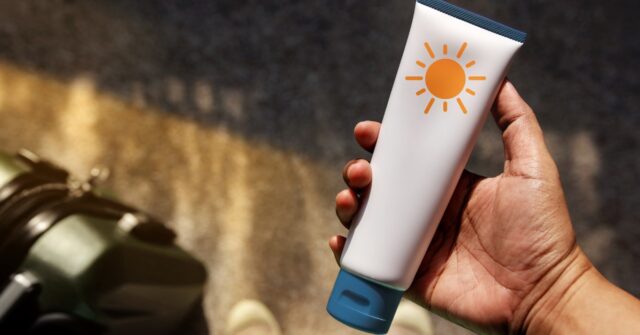Amidst seemingly endless fine prints on the label of your sunscreen, the keywords often get lost. These words are a barrage of information that tell you about the extent of protection you can expect to receive from the product, SPF, the actives in it, and a whole lot more. The labels of a sunscreen from a reliable brand are also expected to give you answers to questions like – how long does its effect last? Will it get washed away with water? etc.
Here are 6 terms that you are likely to see imprinted on your sunscreen and what they actually mean.
1. SPF
SPF, or Sun Protection Factor in full, refers to the duration of time your skin would take to burn after you’ve lathered up your sunscreen as opposed to the time your skin would get burnt without the product. For example, if your sunscreen has an SPF of 15, it indicates that it would take your skin 15 minutes longer to burn than it would without the product.
However, this does not imply that a higher SPF will offer you better protection from the sun’s rays. SPF 30 blocks 97% of the sun’s UVB rays, while SPF 50 saves you from 98% of the rays. Research has shown that a higher SPF does not necessarily mean that it would ensure better protection from the sun. However, an SPF of over 15 has proven to reduce the risk of cancer and also prevent signs of premature ageing.
2. Water-Resistant
Expecting your sunscreen to be completely waterproof is expecting too much from it. It’s impossible. Water and perspiration are bound to rip off a significant quantity of the skin care product from your skin if not all of it. So, what does it mean when the label on your sunscreen claims that it is water-resistant? Are the brands misguiding you? When you see this term imprinted on the label of your product, it actually means it’ll stay water-resistant for about 40 to 80 minutes.
To discuss further, the brand tests the product on a few volunteers. These volunteers are made to sit in a hot tub in a laboratory for the claimed duration of time. If the lab analysts find that the product didn’t wash off or started becoming ineffective for 10 volunteers, the label can claim that the sunscreen is water-resistant.
3. Broad Spectrum
The broad spectrum indicates that the sunscreen protects you against ultraviolet A as well as Ultraviolet B radiation. While most sunburn is caused by UVB rays, a combination of UVA and UVB rays ensures better protection from sunburn, premature skin ageing, and skin cancer.
4. Hypoallergenic / Sensitive
This term indicates the results of the sunscreen after being applied to sensitive skin. The skincare brand tests the product in their lab on volunteers with sensitive skin. Most of the sunscreens that have this label generally comprise the same active and inactive ingredients as the other products manufactured by the same brand. The only differences are that the former are more expensive and there’s also no guarantee against reactions on the skin.
5. Tear-Free / Sting-Free
When you see either of these terms mentioned on the label of your sunscreen, it is likely to mean that it does not contain moisturisers or cooling agents that usually cause irritation in the eyes. During tests conducted in the lab, a non-irritating eye solution or sunscreen is applied to the eyes of the volunteers to observe whether they experience irritation. Sunscreens that claim they “won’t run into the eyes” indicate that they comprise chemicals to hold the product in place on being applied, although it may still irritate the eyes in case the ingredients come in contact with them.
6. Baby
Sunscreens that are formulated specifically for babies usually contain titanium dioxide and zinc oxide as active ingredients, which is generally not the case with sunscreens that do not claim that they are for babies. These are more suitable for a baby’s sensitive skin, which isn’t as developed as that of an adult, or in fact, even a toddler. Despite this, experts often advise that sunscreens shouldn’t be used on babies below 6 months of age. You would rather keep them completely covered with full-sleeved T-shirts, full pants, hats, and scarves to ensure their skin isn’t exposed to the harmful rays of the sun.
